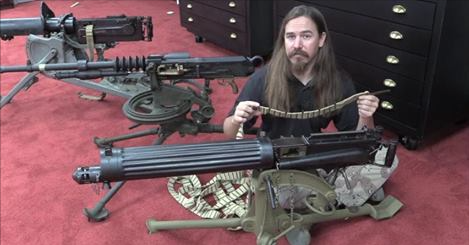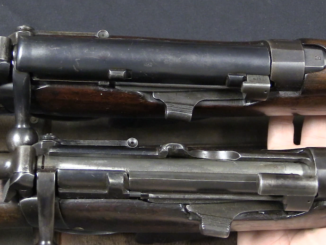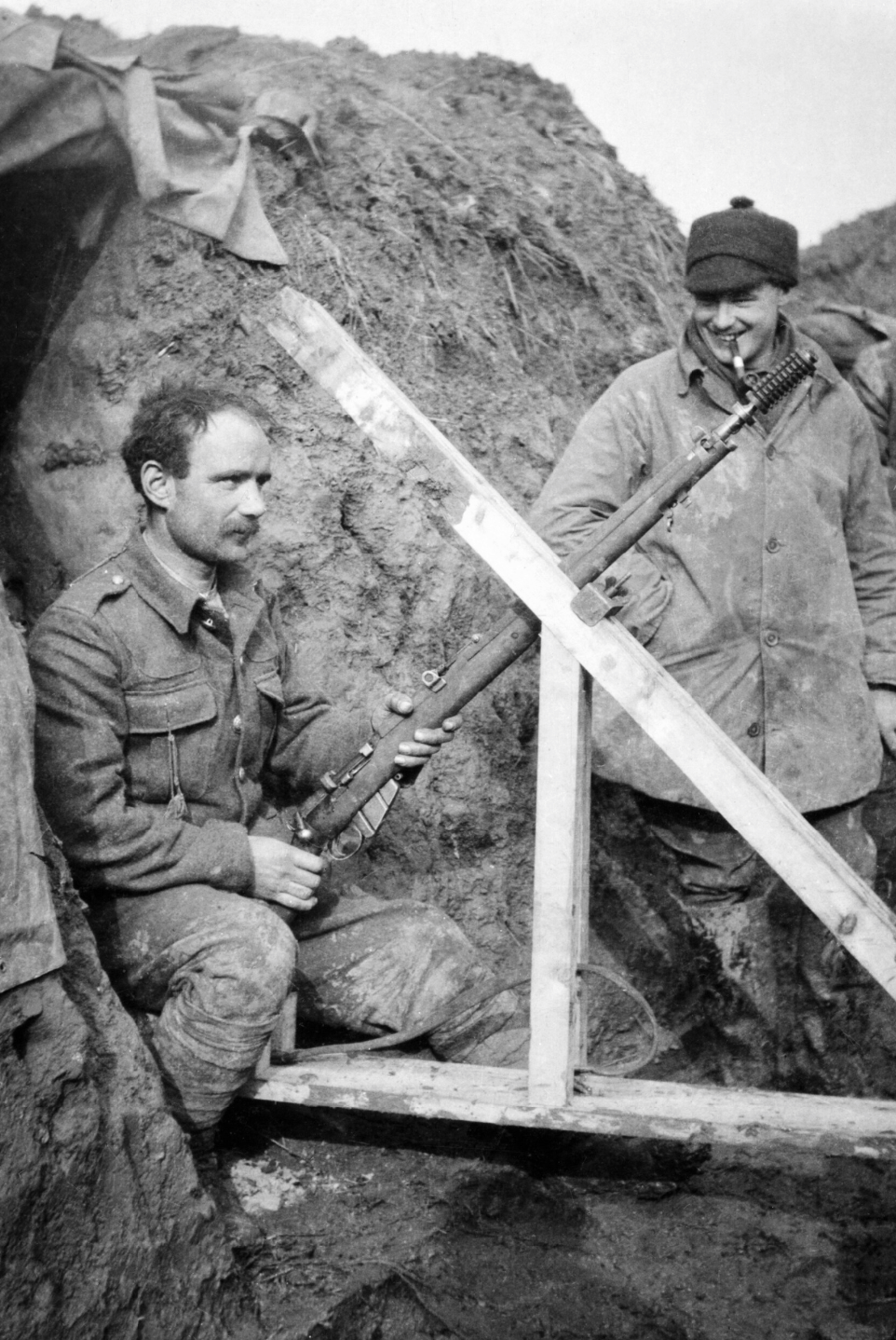Most of the significant wartime simplifications we see on rifles from World War Two are from Germany and Japan, but the rear sight of the No4 Lee Enfield is a good example of a similar action taken by Britain. By 1942, the finely-made milled rear sight assembly of the rifle had become a limiting factor for production, and something needed to be done. So in 1942 a very simple two position “L” flip sight was adopted as a temporary solution. While that allowed production to speed up, a better solution was being developed by BSA. Late in 1942, the Mk III rear sight was adopted, effectively a stamped version of the original. This became the new standard, and some rifles with Mk II flip sights were update din the field by unit armorers.
Related Articles

Heavy MGs
Heavy Machine Guns of the Western Front, WWI
I have been really enjoying The Great War series on YouTube (a rolling weekly account of what happened in WWI this week 100 years ago), so I figured I ought to take advantage of an opportunity […]

Bolt Action Rifles
Colonies Lead the Way: Charger-Loading Lee Enfield MkI India Pattern
While the Indian Army was looked down upon by much of the British military, it saw much more combat service than its European counterpart. The Indian Army was actually faster than the British to recognize […]

Artillery
Vintage Saturday: Rifle Grenade
2nd Lieutenant L. J. Barley of the 1st Battalion, Cameronians (Scottish Rifles), watching as a rifle grenade is prepared for firing from trenches at Grande Flamengrie Farm on the Bois Grenier sector of the line […]

Next: let’s go over bolt head release methods….
LOL! I guess “Minutia About Not-Remotely-Forgotten Weapons” doesn’t have the same ring, but – based on the gushy feedback to “Adventures in Surplus” – that seems to be where things are headed.
I now know that the No4 I used back in the day had a Mk III sight. I feel enriched by this knowledge.
I have a Home Guard training manual from 1942 written by one Lt Col J A Barlow. It is a useful little book, full of information about British, US and enemy weapons, though nothing Russian or Japanese.
The instructions given for a No 4 with the flip up rear sight are as follows: the 300 yard aperture is zeroed for the rifle with a fixed bayonet; without a fixed bayonet, it is zeroed for 400 yards. Below 300 yards you are advised to aim down by no more than 8 inches. The 600 yard aperture is zeroed for a rifle without a bayonet; at 500 yards you are advised to use the 600 yard aperture and aim down 30 inches.
These instructions are described by Lt Col Barlow as “very simple”. We won the war, so he must have been right!
At least the process does not involve a complete disassembly of the weapon just to recalibrate the sights…
I suspect the relative speed with which the MK III superseded the two-position flip (very like that of a Civil War Maynard 1862 “war emergency” model) indicates that a substantial number of Tommies told RSAF Enfield exactly where they wanted to put the bayonet, and it wasn’t on the business end of the rifle to “adjust for range”.
cheers
eon
Mike aka Bloke on the Range did a very interesting piece on the No.4 Enfield rear sights. Good video that answers quite a few question and raises a few more. Here is a link. https://www.youtube.com/watch?v=keZoROIMxbQ&feature=emb_title
The second rifle, with the Mk.II “L” sight, seems to have no serrations on the cocking piece. That would make it a 3rd or 4th variation, both considered very rare. The 3rd variation had no half-cock notch.
It’s worth examining that war-time expedient a little closer.
With the 3rd variation, an ease springs with a round up the spout could be more exciting than the drill manual intended it to be.
Which probably explains its rarity.
cheers
eon
As a general rule, if you must decock a weapon with no half-cock notch, it is best not to do with with a round in the chamber. One of the best “set to safe” practices I’ve seen done with the Type 38 Long Rifle was to shove the cartridges down while riding the bolt forward, so that no cartridge was pushed into the chamber. Thus, you’d have a full magazine and NOT lose a round when recocking the rifle for immediate action. I could be wrong.
Ease springs with a round in the chamber was intended to allow recocking for immediate action without the noise of working the bolt. This was especially advantageous on night patrols, on trench raids, and in guerrilla-style skirmishing.
It was a standard procedure with the SMLE, going back to the No.1 Mk 1 “Long” Lee-Enfield which was built with no manual safety. (That didn’t last long.)
Its presence on the 3rd variation of the Rifle No. 4 once more shows that military design establishments have a distressing habit of not remembering their own previous history.
cheers
eon
Interesting story.
Elegant solution. Although, perhaps, they could well be content with a simplified rotary sight. Apparently, there were reasons to keep the full version.
A rifle without a sight is useless.
In this connection, I recall the case of my friend 1948-49 in Palestine.
He shot down an Arab operator from Thompson (Left for the Arabs by the British. This is a different story.)
And one of the bullets hit the Lee Enfield sight.
What was the scandal …
As he himself said, “I thought that the sergeant would bury me along with that Arab.” LOL
I can say from myself that now it is very difficult to find normal ways and methods to create good software that will help automate the process. For many it is not easy, but it is good that I was helped by my friends and acquaintances, who should be hired to develop such a software. Because there are no possibilities and no skills to do it myself. And the software was already needed. Because I found the hiring software developers in ukraine and it is thanks to them that I was able to get a good and high-quality software and consulting on it. This is just as important, and who better to do it than a developer.